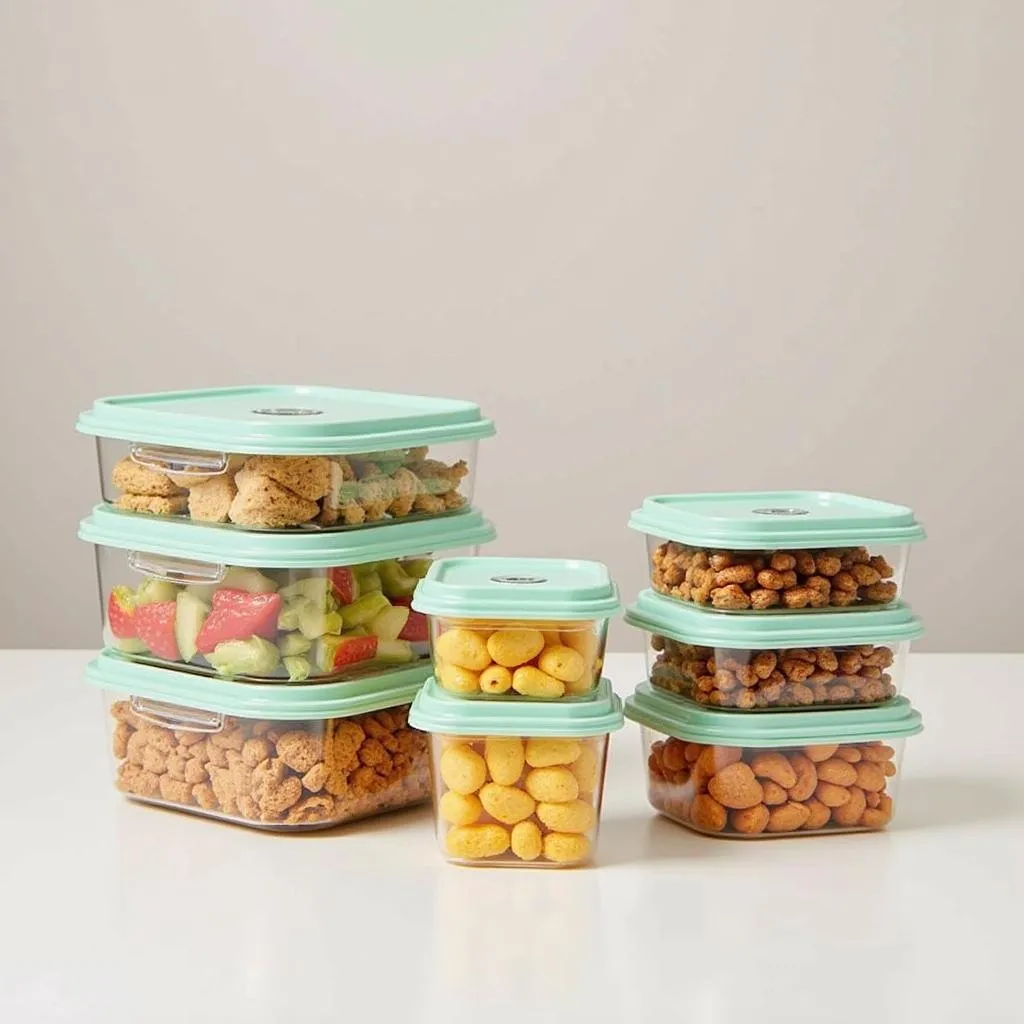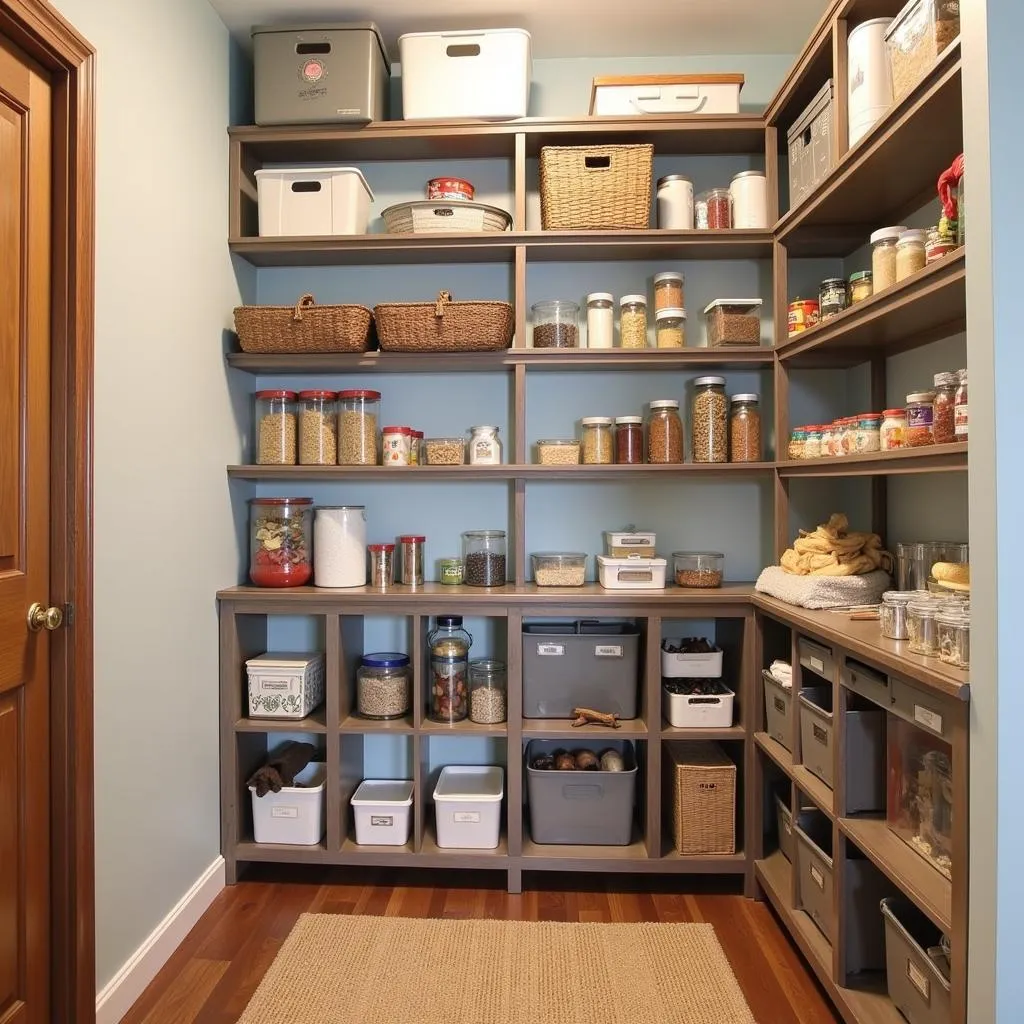Planning for a 5-year food supply is a big undertaking, but it’s a smart move for anyone who wants to be prepared for unexpected events like natural disasters, economic crises, or even just a pandemic. But with so much information out there, it can be overwhelming to know where to start. This article will guide you through the basics of a 5-year food supply, covering everything from why it’s important to what you should stock up on and how to get started.
Why Is a 5-Year Food Supply Important?
A 5-year food supply is designed to provide you with enough food to sustain yourself and your family for a prolonged period, even if access to regular food sources is disrupted. This could be due to various reasons such as:
- Natural disasters: Earthquakes, floods, hurricanes, and other natural disasters can cause widespread damage, disrupting supply chains and making it difficult to access food.
- Economic crises: Financial downturns, pandemics, or political instability can lead to shortages and price spikes, making it harder to afford groceries.
- Social unrest: Riots, protests, or other forms of social unrest can make it unsafe to leave your home or access food sources.
- Global events: Pandemics, wars, or other major global events can disrupt supply chains and create food shortages.
What to Stock Up On
A 5-year food supply should include a variety of foods that are non-perishable, nutritious, and easy to store. Here’s a breakdown of what to consider:
1. Grains:
- Rice: A staple food that’s affordable, versatile, and has a long shelf life.
- Wheat: Another staple grain that can be used for bread, pasta, and other baked goods.
- Oats: A good source of fiber and protein, oats can be made into oatmeal, granola, or added to baked goods.
- Cornmeal: A versatile grain that can be used for making cornbread, grits, or tortillas.
2. Beans and Legumes:
- Beans: An excellent source of protein and fiber, beans are a versatile ingredient that can be added to soups, stews, salads, or eaten as a side dish.
- Lentils: Similar to beans, lentils are a good source of protein and fiber. They can be added to soups, stews, or salads.
- Peas: Another great source of protein and fiber, peas can be eaten fresh, frozen, or dried.
3. Canned Goods:
- Fruits: Canned fruits are a good source of vitamins and minerals. Choose fruits with a high water content, such as peaches, pears, and apricots.
- Vegetables: Canned vegetables are another good source of vitamins and minerals. Look for low-sodium options.
- Meat: Canned meat, like tuna, chicken, and salmon, can be a good source of protein. Choose options packed in water or juice, not oil.
- Soups: Canned soups can be a quick and easy meal option. Choose low-sodium options and check the ingredients list for added sugar.
4. Other Non-Perishable Foods:
- Dried fruits and vegetables: Dried fruits and vegetables are a good source of vitamins and minerals and can be eaten as snacks or added to meals.
- Nuts and seeds: Nuts and seeds are a good source of protein, healthy fats, and fiber.
- Powdered milk: Powdered milk has a long shelf life and can be used to make milk, yogurt, or cheese.
- Salt and spices: Salt and spices are essential for flavoring your food.
- Sugar: Sugar can be used to sweeten your food and drinks.
- Honey: Honey is a natural sweetener with a long shelf life.
- Cooking oil: Cooking oil is essential for preparing your food. Choose a stable oil, like olive oil or coconut oil.
5. Other Important Considerations:
- Water: You’ll need plenty of water for drinking and cooking.
- Vitamins and supplements: Consider stocking up on essential vitamins and supplements to ensure you’re getting all the nutrients you need.
- First-aid supplies: A well-stocked first-aid kit is essential in case of an emergency.
How to Get Started:
- Assess your needs: How many people are you planning to feed? What are your dietary restrictions? What are your storage options?
- Set a budget: How much can you afford to spend on a 5-year food supply?
- Start small: You don’t have to do everything at once. Start by stocking up on a few essential items and gradually expand your supply over time.
- Rotate your stock: Regularly check your food supply and rotate items to ensure freshness.
- Consider a food dehydrator: A food dehydrator can help you preserve fresh fruits and vegetables, extending their shelf life.
- Store your food properly: Store food in airtight containers in a cool, dry place.
 Airtight food storage containers
Airtight food storage containers
How to Store Food for 5 Years
Storing food for a prolonged period requires careful attention to prevent spoilage and maintain nutritional value.
- Use airtight containers: Choose durable, airtight containers to protect your food from moisture, pests, and oxygen.
- Store in a cool, dry place: Ideal temperatures for long-term food storage are between 45-70°F (7-21°C).
- Avoid direct sunlight: Sunlight can damage food and shorten its shelf life.
- Label and date your items: Label each container with the contents and the date of packaging. This helps ensure proper rotation and prevents you from accidentally consuming expired items.
- Consider a food storage rotation system: Use a system to rotate your food supply to ensure that the oldest items are used first.
Is a 5-Year Food Supply for You?
While a 5-year food supply might seem like a daunting task, it can provide peace of mind and a sense of security. However, it’s not for everyone.
- “I’m not sure I have enough space to store it all.” Consider purchasing a dedicated food storage container or utilizing space in your garage or basement.
- “It’s too expensive.” Start small and gradually build up your supply over time. You can also look for sales and discounts.
- “I don’t have the time to prepare.” Choose foods that are easy to store and don’t require extensive preparation.
Conclusion:
A 5-year food supply is a proactive step towards self-reliance and preparedness. By stocking up on essential foods and learning how to store them properly, you can ensure you have enough to eat in case of an emergency. While it may seem overwhelming at first, breaking down the task into smaller steps and focusing on your individual needs can make the process more manageable.
Remember, a 5-year food supply isn’t just about surviving; it’s about thriving during difficult times. It’s about having the peace of mind knowing you can care for yourself and your family, no matter what challenges lie ahead.
 Dedicated Food Storage Room
Dedicated Food Storage Room
FAQ:
1. How much food do I need for a 5-year supply?
The amount of food you need will depend on the size of your family, dietary needs, and storage space. A general rule of thumb is to plan for 1,000 calories per person per day.
2. Can I store food for 5 years without it spoiling?
Yes, many foods can be stored for 5 years or longer if they are properly stored and rotated.
3. What if I don’t have enough space to store a 5-year food supply?
You can start with a smaller supply and gradually build it up over time. You can also consider renting a storage unit or utilizing space in your garage or basement.
4. How do I know if my food is still good to eat after 5 years?
Check the expiration date on the packaging. You can also inspect the food for signs of spoilage, such as discoloration, mold, or an unusual odor.
5. How often should I rotate my food supply?
It’s best to rotate your food supply at least once a year. This helps ensure that the oldest items are used first and that you don’t have any food go to waste.
6. What are some of the most important things to include in a 5-year food supply?
The most important things to include are grains, beans, canned goods, non-perishable foods, water, and first-aid supplies.
7. What are some tips for making a 5-year food supply more affordable?
- Look for sales and discounts.
- Buy in bulk.
- Choose generic brands.
- Consider growing your own food.
Ready to take the next step towards a secure future?
Contact us today! We can help you create a 5-year food supply tailored to your specific needs and budget.
Call us at: 02437655121
Email us at: minacones@gmail.com
Visit us at: 3PGH+8R9, ĐT70A, thôn Trung, Bắc Từ Liêm, Hà Nội, Việt Nam.